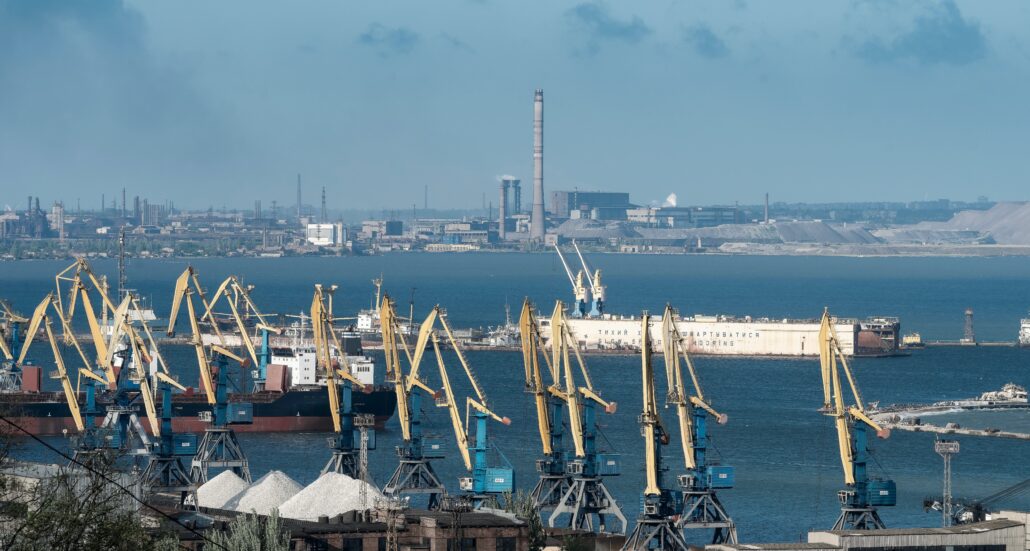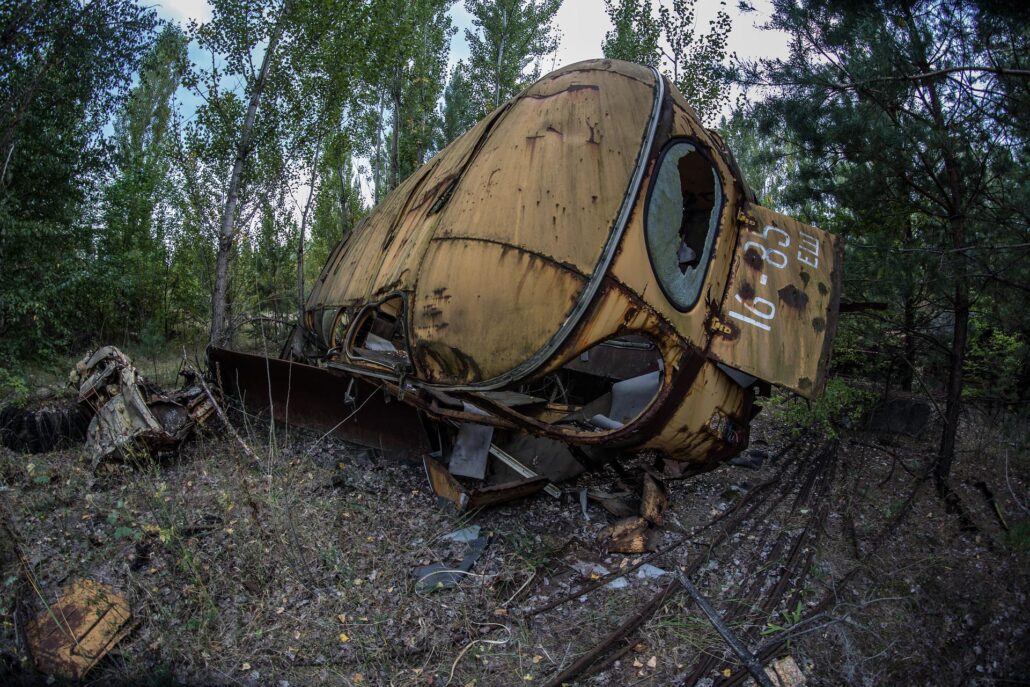June 03, 2022

War means uncertainty of tomorrow. It is tragic, terrifying and disastrous for humans but – no matter who wins – it is also a loss for the natural environment: the invisible third side of a war.
The natural environment is affected locally both in and out of warzones, but in war times nobody takes care of local environmental crises anymore. Since they are usually managed by the national army, they remain in stand-by because soldiers are busy elsewhere [1]. The environment is also affected globally because the climate crisis inevitably slides into the background of governments’ agendas.
ENVIRONMENTAL EFFECTS IN THE WARZONE
Areas that once were crowded with people and animals become empty shredded ruins after a battle. Cities collapse and forests burn. Fires and explosions are the most common environmental war-related disasters, along with debris and waste accumulation on roadsides [2]. Since last February 24, this has become the situation in Ukraine. And yet, it represents just the tip of the iceberg of the environmental impact caused by the war in Ukraine.
Ukraine received from the Soviet Union a heavy industrialized but strongly polluted inheritance. The Donbas area is indeed rich in quarries and mines. Up to the second half of the XX century, it was a rich mining hub of coal, salt, potassium, and rare-earth-metals [3]. Between 2014 and 2022, the conflict in Donbas has presented significant risks to the environment and the public health of local people. Now, with the full-scale Russian invasion of Ukraine, it is more difficult to understand and keep monitoring the real environmental risks.
Even before the beginning of the 2022 war, abandoned coal mines in Donbas were flooding with toxic substances. Cuts in electricity supplies and disruption from the conflict, which in Donbas started in 2014, led to the breakdown of water pumps in coal mines. This caused flooding and groundwater pollution, and an increasing risk of contamination for the Siverskyi Donets River, a source of drinking water for most locals [4].
Since the invasion started, the number of environmental hazardous accidents has raised. On 13 March a shelling damaged the coke plant – mainly for industrial purposes – and the thermal power plant in Avdiivka risking the release of harmful substances. In Sumy, another shelling led to ammonia leakage. Many other heavy industry factories have been suffering from war damage all over Ukraine.
Additionally, the breakdown of the waste management system raised a dilemma about all the waste storage and recycling facilities containing toxic waste. It was estimated that in Ukraine there are 465 storage facilities with over six billion tons of hazardous waste. Around 60 % of them are old and abandoned. Their proximity to water bodies and towns could lead to polluting Ukraine’s major rivers, which flow through Russia, Moldova, and Belarus [5].
Eventually, battles close to nuclear sites, like the ones of 9-10 March close to the dismissed Chornobyl Power Plant or Zaporiz’ka Nuclear Power Plant, raised concern of another nuclear disaster after 1986. Even if nuclear plants are under the protection of the Geneva Convention and they may not be made the object of a deliberate attack [6], there is still a high risk of incidental damage when these plants happen to be near the front line [5].

Fig. 1: Wreck in the woods close to Chernobyl’s nuclear plant. Image by Wendelin Jacober from Pixabay.
GLOBAL ENVIRONMENTAL EFFECTS OF WARS
The global climate impact of the Ukrainian war is linked to the relations between Russia and Western countries. Here, the main actors are the energy and fuels markets, crucial for the economies of Europe and Russia, as well as for the climate crisis.
The decreasing flow of Russian gas into European pipelines provoked an initial period of concern among European countries. At that time, it stroke that the energy independence and the Paris Agreements could be reached hand in hand.
On May 18, the European Union accelerated the REPowerEU plan, attempting to stop its reliance on Russian gas and, at the same time, promoting the energy transition towards a decarbonized economy. The program aims to increase energy savings, diversify supplies, and accelerate the roll-out of renewables that can replace fossil fuels [7].
Can this be actually the time of renewables?
War comes along with change, but solar and wind power still need critical and hard-to-retrieve materials and technologies, such as rare earth metals and smart grids. Being able to access and transform them is an ambitious goal that must be reached as soon as possible to guarantee energy independence and net-zero emissions to Europe [8].
Ban Ki-moon, the former Secretary-General of the UN, affirmed that the environment is the silent casualty of war [5]. War destroys and pollutes the environment in the fighting areas and there is not much civilians and institutions can do, other than keeping the situation monitored and sending humanitarian aid.
Cover photo: View of Mariupol’s harbor, Ukraine (May 2021). Photo by Viktor Hesse on Unsplash.
Preview photo: Wreck in the woods close to Chernobyl’s nuclear plant. Image by Wendelin Jacober from Pixabay.
REFERENCES:
[1] https://www.independent.co.uk/climate-change/siberian-wildfires-climate-crisis-russia-b2063988.html
[2] https://ceobs.org/how-does-war-damage-the-environment/
[3] https://it.wikipedia.org/wiki/Donbass
[4] https://ceobs.org/country-brief-ukraine/
[5] https://www.greeneuropeanjournal.eu/the-environmental-cost-of-the-war-in-ukraine/
[6] https://ihl-databases.icrc.org/customary-ihl/eng/docs/v1_rul_rule42
[7] https://www.affarinternazionali.it/repower-eu-autonomia-energetica-europea/
[8] https://www.limesonline.com/autori/fabrizio-maronta


